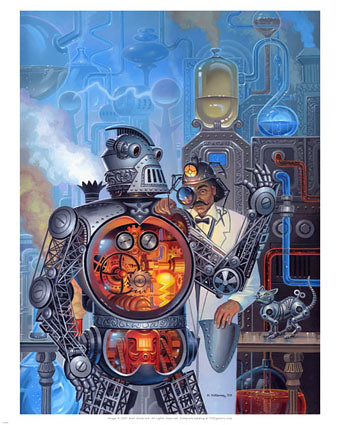“Why, with this invention…”

Apparently, if my goal in last week’s post about invention and innovation was to spark discussion, bringing up the Edison/Tesla rivalry was the right thing to do. For example, here’s a excerpt from Richard Lessman’s comment:
Except that despite being poor and having many of his inventions unrealized, a hundred years later we’re still using Tesla’s work rather heavily. This says something about his pure success as an inventor, with or without massive market capitalization.
…And I agree. Yes, our electrical distribution mechanisms use Tesla’s AC, not Edison’s DC. Yes, Tesla’s coils became a component of other inventions, such as radio transmitters and medical devices. And yes, arguably, Tesla is a vastly underappreciated inventor.
However, none of that necessarily helps technology companies, which frequently confuse invention and innovation, understand how to be more successful businesses. Six years passed between Tesla’s invention of his eponymous coil and the first demonstration that it could be part of an economically viable technology for "wireless telegraphy." More years passed before radio transmitters and receivers enjoyed widespread adoption.
Needless to say, that’s not the time-to-market that modern technology companies hope to achieve. Rather than focus on innovation–spreading the practical application and adoption of an invention–some technology vendors conclude that they need to keep tinkering with the invention.

The unstated assumptions sound a lot like Victorian notions of science and technology, at least in the popular culture of the age:
- New technology grants immediate power. Think Captain Nemo and the Nautilus, which destroyed warships with impunity. Verne gave almost no details on how Nemo got the material and labor to create the Nautilus in the first place.
- New technology finds widespread application, somehow. Never mind the details like, say, how the telegraph went from "What hath God wrought?" to an international communications system. Even modern histories bleep over the "go-to-market" for the telegraph, as if technology merely flowed of its own accord into the spaces where it’s needed.
Of course, Victorians were in love with science and technology. Fervent admirers don’t care about the unlovely process of what happens before the premiere. What captures their imagination is the moment their object of desire steps onto the stage, with all the glory of success, and none of the homelier efforts that preceded it.
While this conceit might work in a technothriller, the missing details matter a great deal in the technology industry, where good ideas don’t always succeed. Invention and innovation aren’t mutually exclusive, so tech vendors need to invest in both to succeed.